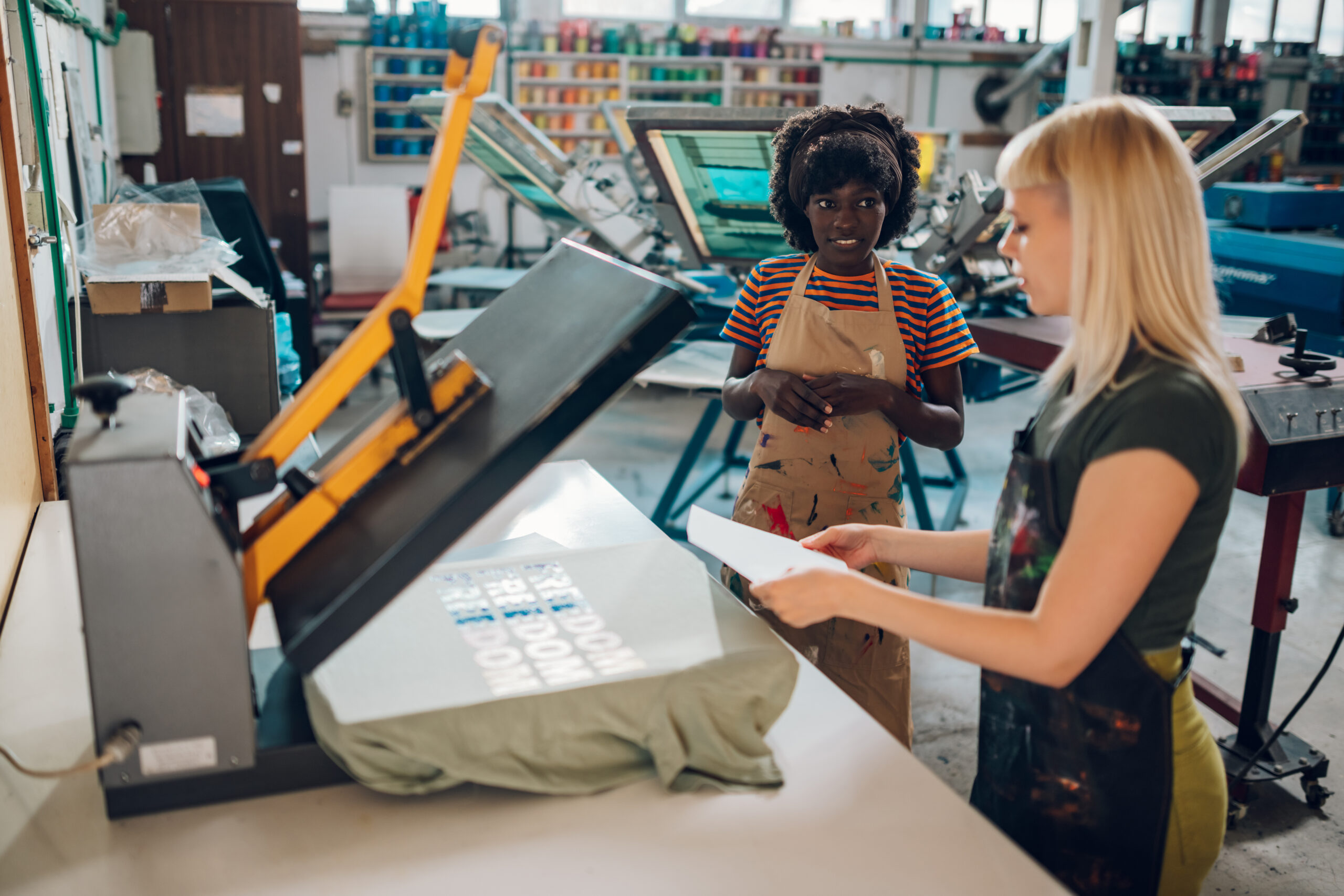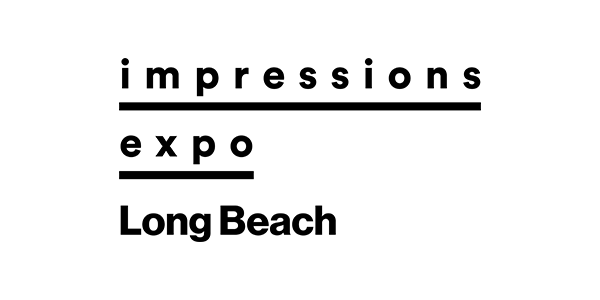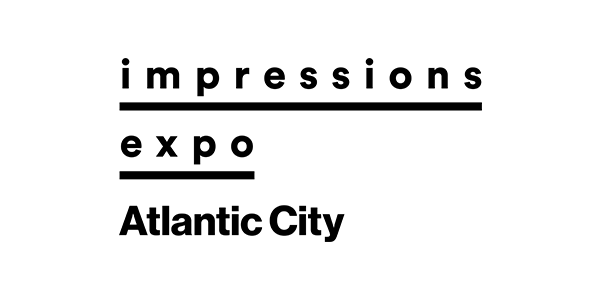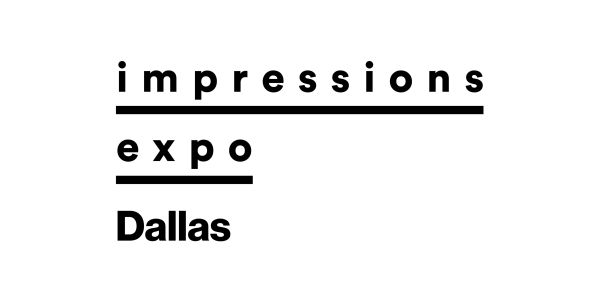Dye-sublimation has long been a trusted method for textile decorators, standing the test of time despite industry shifts. Over the past decade, it has remained a steadfast choice amid the introduction of direct-to-film (DTF or DTFilm, as we describe it at my company, Epson) and growth of direct-to-garment (DTG) printing.
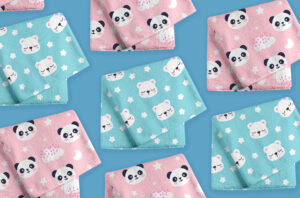
The dye-sublimation process has a seamless, soft feel ideal for products like baby blankets. Photo courtesy of Epson
Even as apparel trends evolve, economic conditions fluctuate and new technologies emerge, dye-sublimation continues to prove its reliability in the textile industry.
Over the past few years, we’ve seen interest in DTFilm printing grow, as compact systems offer many advantages for apparel decorators. DTFilm involves printing designs onto a designated film, applying a TPU adhesive DTFilm powder and then transferring thes image using a heat press onto virtually any fabric. Among the advantages of DTFilm over DTG, in which a design is printed directly onto the garment being decorated, is the fact it can be used to decorate a wide range of fabrics and doesn’t require the same pretreatment use with DTG.
While DTG and DTFilm are driving the businesses of smaller apparel decorators—many of which started during the pandemic—in the coming years, as these businesses grown they will undoubtedly look to expand their solution offerings. With this in mind, apparel decorators can easily weave dye-sublimation into their current workflow and reap its benefits, including impressive versatility, expansive color gamut and low maintenance requirements. For many small shops, it can significantly enhance business operations and increase ROI.
Setting Up Shop
Like DTFilm, dye-sublimation printing involves a transfer process; unlike DTFilm, dye-sublimation ink dyes the polyester fibers of the fabric, rather sitting on top. Each design is printed on a transfer paper that is then applied to the fabric through a heat transfer process; this is where the magic of

A reliable heat press, like the Hotronix ProPlace IQ, goes a long way to achieve amazing sublimation results. Photo courtesy of STAHLS’
sublimation begins. The heat and pressure placed on the transfer paper initiates a chemical reaction that turns the ink into gas that dyes the fabric. It is also here where the colors bloom and become more vibrant.
Note: because of the chemical reactions that are integral to this kind of decorating, sublimation can only be used with polyester fabrics or on polyester surfaces. Also, because sublimation dyes become a part of the fabric or surface they’re decorating, and not covering them up, as is the case with, say, DTFilm, it can only be used on white or very light-colored surfaces.
For apparel shops looking to invest in dye-sublimation, there are two critical pieces of hardware—the printer and a compatible heat press. If a business is already offering DTFilm or DTG, they most likely already have at least one compatible heat press. However, if an apparel decorator is interested in a wide-format dye-sublimation printer, a bigger calendar-style heat press is needed for larger applications and bolt fabric orders will be an essential part of the wide-format print process.
For apparel decorators using DTFilm and DTG, dye-sublimation ink follows the same regulations. For example, OEKO-TEX ECO PASSPORT is one testing recognition that is applied to all textile-based inks and certifies inks are not harmful to human health. This is essential when creating apparel, especially for infants and children.
Expanding Apparel Decorator Applications
Dye-sublimation is extremely versatile and can greatly expand an apparel decorator’s business. Unlike DTFilm and DTG, dye-sublimation offers an

Supercharge your business’s productivity with the high-performance SureColor® F9570. Photo courtesy of Epson
expansive realm of printer sizes, ranging from desktop to 76-inches and above. By adding sublimated polyester textile offerings, textile applications expand to include full-size athletic wear, dri-fit apparel, loungewear (such as yoga pants), swimwear and more.
Because the dye-sublimation process is one in which the ink is fused into the fabric, textile output has a seamless, soft feel and primarily maintains its original hand feel. Sublimated fabrics also have a high rub resistance, and the colors will not rub off onto you or another layer of clothing. This is ideal for applications such as dri-fit shirts, exercise towels, yoga wear and blankets that come into direct contact with the body. These applications would not be a good fit for DTFilm, where its surface texture is noticeable.
When looking to invest in a dye-sublimation printer, consider its versatility and ink technology. Dye-sublimation requires exceptional color saturation and high contrast, so it’s ideal to invest in technology that offers a high-density black to ensure output has outstanding tonal transitions and grayscale. In addition, some printers offer spot colors, including fluorescent options, which are ideal for creating on-trend athleisure, safety wear and can produce textiles for new and emerging trends, such as tie-dye and neon clothing.
Pending printer size, dye-sublimation can further expand output opportunities outside of apparel to include soft signage, home décor, personalized gifts, photography applications, promotional items and more. Note this includes items such as plates, mugs and other drinkware.
Fitting into a DTFilm and DTG Workflow
For apparel decorators, dye-sublimation is a valuable addition to their toolkit, offering vibrant, long-lasting prints on polyester and specialty products.

Epson’s new SureColor F9570H offers advanced dye-sublimation transfer printing for sports and other decorated apparel. Photos courtesy of Epson
Adding dye-sublimation to an existing DTFilm workflow allows the apparel decorator a choice of which print method to use based on the incoming order and customer request. For textile orders that require an all-over print, large graphic, soft hand feel, or polyester or dri-fit material, dye-sublimation is a better solution. For low-run, personalized cotton shirts with smaller graphics, or 3D textiles such as hats and shoes, DTFilm is the more ideal and efficient solution.
For apparel decorators currently using DTG or DTFilm, integrating dye-sublimation should be a simple transition since they already have knowledge of apparel decoration, as well as experience using a heat press. This allows them to both fill the gap and expand their product offerings with minimal time and investment. After the initial investment, as the dye-sublimation portion of the business grows, apparel decorators can determine if a larger heat press is needed to meet incoming demand.
Decorators can mix and match technologies to make unique garments. They can use dye-sublimation to create a large, seamless design on a garment and personalize it with unique features added with DTFilm.
Furthermore, adding dye-sublimation allows customers to increase orders. If an apparel decorator has a loyal customer who continuously orders team T-shirts, that customer can now add matching tumblers, sunglasses straps, headbands, lanyards, keychains, practice bags and team banners. This not only increases order size and ROI but also strengthens customer loyalty and retention.
Maximizing ROI and Futureproofing
Integrating dye-sublimation into an existing DTG or DTFilm workflow should be an easy transition with an abundance of benefits for an apparel decorator. With a minimal first investment, apparel decorators can start filling the gap within textile offerings and potentially expand outside of textiles, growing their shop and tapping into new markets from sportswear to promotional products and personalized home textiles and gifts.
Again, in addition to textiles, there are boundless opportunities to sell personalized products and gifts, including custom laptop bags, tote bags, wood décor photo panels, smartwatch bands, and award plaques. Promoting personalized gifts for occasions like Mother’s Day, Father’s Day, Christmas and Hanukkah provide even more opportunities to drive sales and maximize ROI.
Starting small still offers expansive opportunities for an apparel decorator, and as the demand grows, so do the opportunities for larger orders with higher profit margins.
Lily Hunter is a product manager at Epson overseeing the SureColor F-Series and SureColor G-Series printers, a portfolio encompassing over a dozen direct-to-garment, direct-to-film and dye-sublimation printers. With over 25 years in the industry, she is responsible for product development, go-to-market strategies and managing cross-functional teams.

